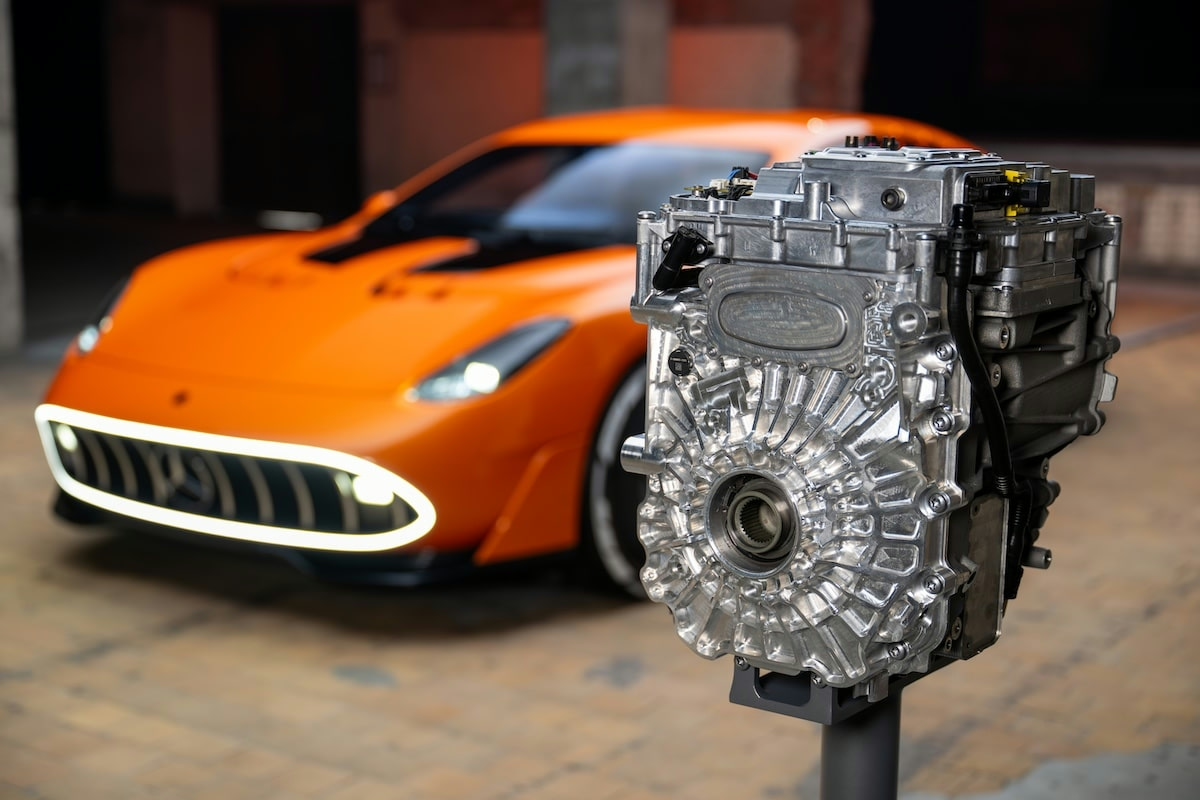The AMG GT XX Concept from Mercedes Hides a Real Revolution

By equipping the AMG GT XX with axial flow motors, Mercedes is defining a new way to drive the electric future.
With its Concept AMG GT XX, Mercedes is not just adding more horsepower to an electric car. It is changing the technical paradigm by introducing the axial flow motor, a technology that has been rarely used in the automotive industry until now. To understand this advancement, we must delve into the heart of the motor itself and grasp how it converts electricity into motion.
Every electric motor relies on two essential components: the stator and the rotor. The stator is the stationary part of the motor. It contains coils of copper wire through which an electric current flows. This current creates a rotating magnetic field. The rotor, on the other hand, is the moving part, usually equipped with permanent magnets. When subjected to the magnetic field generated by the stator, it begins to rotate.
In a traditional radial flow motor, the magnetic field acts perpendicular to the axis of rotation. The rotor spins around the stator in a cylindrical configuration. It is efficient, but it occupies a lot of space and limits power.
Next step for Mercedes, reinventing the wheel?
The axial flow motor chosen by Mercedes operates quite differently. Here, the stator and rotor are placed face to face, in the form of flat discs. The magnetic field, instead of passing through the motor from the outside to the inside, flows parallel to the axis of rotation, back and forth.
Imagine two magnetized discs rotating around the same axis, with a fixed disc (the stator) placed between them. When electricity flows through the coils of the stator, it generates a rotating magnetic field. This field dynamically attracts or repels the magnets of the rotor, causing it to spin. Since the field acts in the same direction as the rotation, energy is transmitted more directly and efficiently.
This flat arrangement allows for greater force concentration in a reduced space. The magnetic flow is better utilized, losses are minimized, and heat is better distributed. As a result, for the same volume, an axial flow motor is more powerful, lighter, and more durable than a traditional motor. The Concept AMG GT XX incorporates three of these compact motors delivering a total of more than 1,360 horsepower.
But if the axial flow motor is lighter, more compact, and more efficient than the classic radial flow motor, why isn’t it used everywhere? More compact and powerful than the traditional motor, it is not yet widespread due to its complex manufacturing, high cost, especially in rare earths, and its delicate cooling needs. It requires precise assembly and advanced technologies, which are currently reserved for high-performance vehicles. For more common uses, traditional radial motors, which are simpler and less expensive, remain the preferred choice. Thus, while axial flow is promising, it is still limited to technological elites.
ALSO READ: Mercedes AMG GT XX: 1340 hp of electric fury
This page is translated from the original post "Le Concept AMG GT XX de Mercedes cache une vraie révolution" in French.
We also suggestthese articles:
Also read






